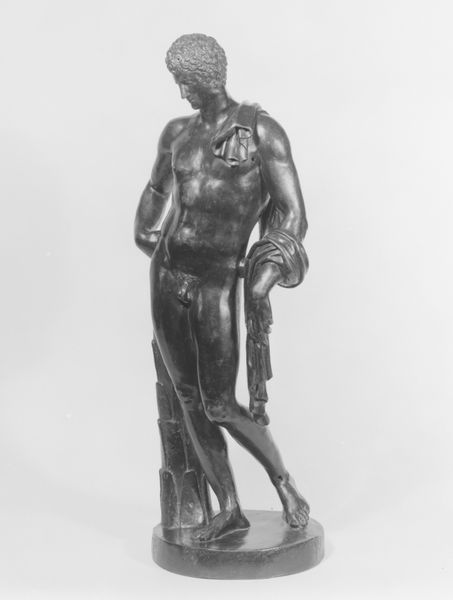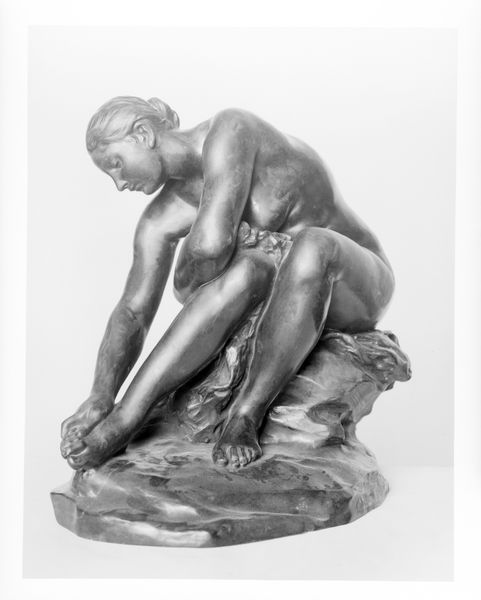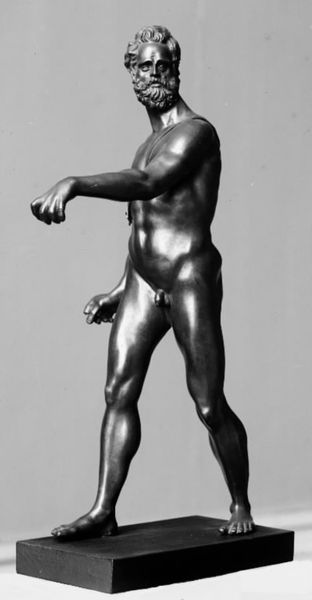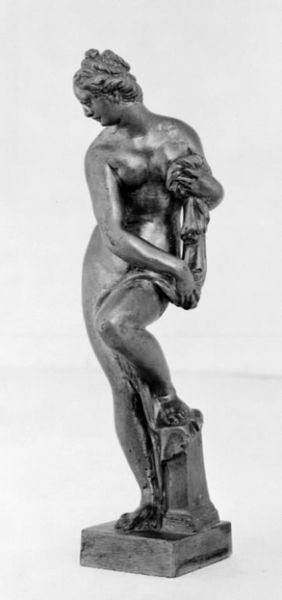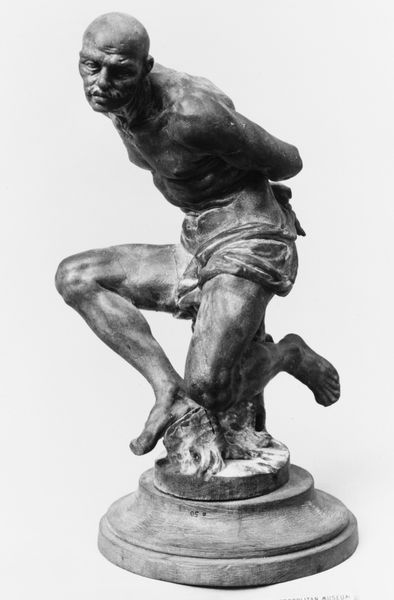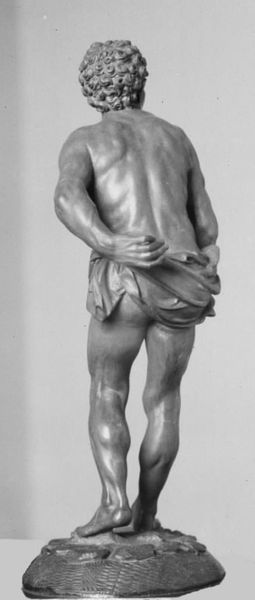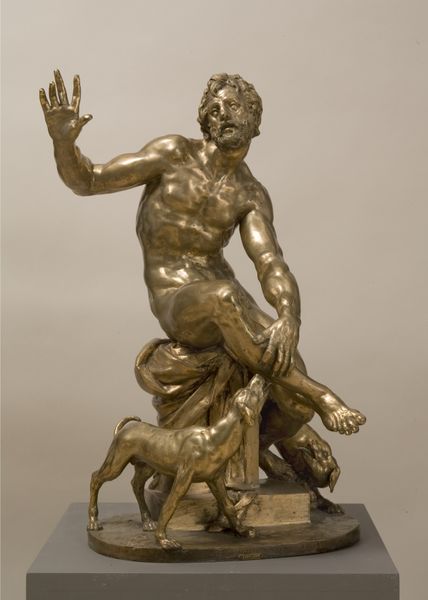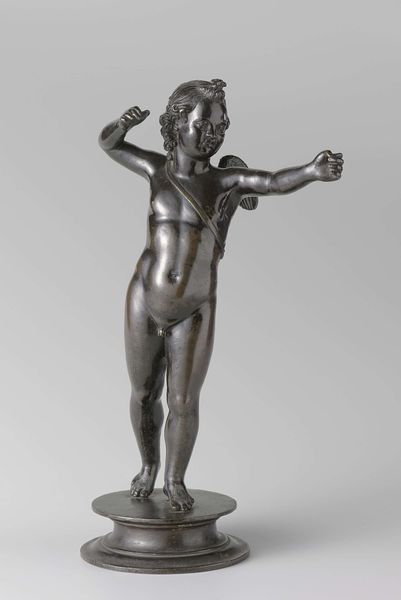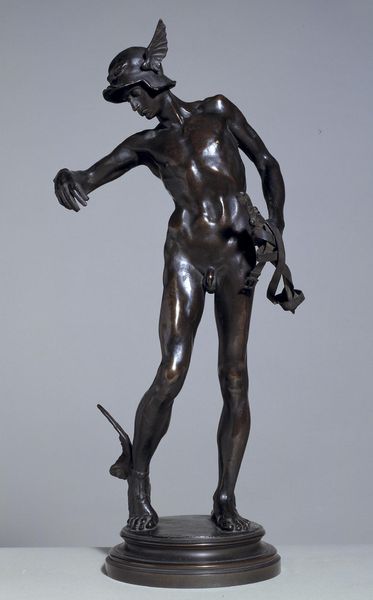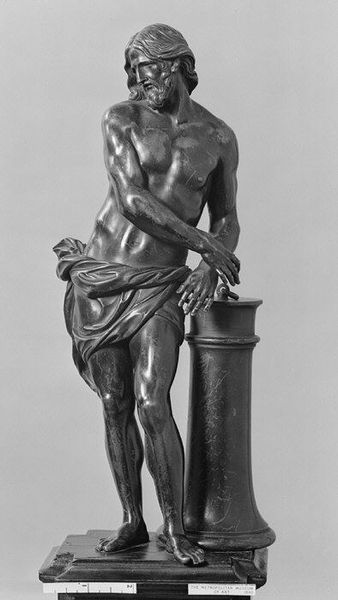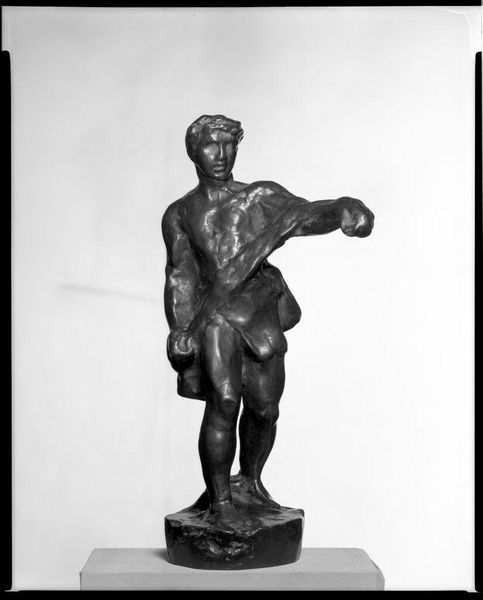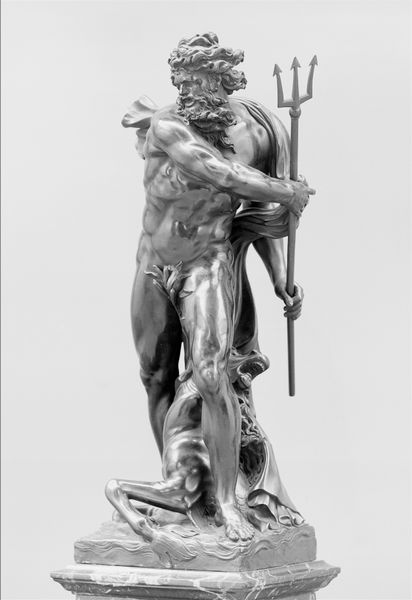
En dreng der vil bade. Siddende nøgen dreng, der prøver vandet med sin ene fod 1856
0:00
0:00
bronze, sculpture
#
sculpture
#
bronze
#
figuration
#
sculpture
#
genre-painting
#
academic-art
#
nude
#
realism
Dimensions: 24.6 cm (height) x 13.8 cm (width) x 20.8 cm (depth) (Netto)
Curator: Standing before us, we have a bronze sculpture by O. Evens, crafted in 1856. It’s entitled "En dreng der vil bade. Siddende nøgen dreng, der prøver vandet med sin ene fod" which translates to "A boy who wants to bathe. Seated nude boy, testing the water with one foot." Editor: The piece has a hesitant quality about it. He’s right on the precipice of taking a dip, caught in a moment of apprehension. It’s rather sweet, this careful testing of the waters. Curator: This sculpture aligns with academic art's focus on idealized forms and genre scenes that were popularized at that time, often intended to convey a moral lesson. Note how his pose is a conscious recall to antiquity, almost evoking a miniature Cupid, even though the piece suggests the modern sensibility of genre realism. Editor: The nudity of a child is such a loaded symbol. Often it carries overtones of innocence, vulnerability. Here, though, it's the everyday vulnerability we all face when confronting new experiences. His hesitation becomes almost a universal symbol of human uncertainty. Curator: Exactly, the representation of nudity in 19th-century sculpture became a nexus for ideas about art, nature, and social mores. Representations of innocence became increasingly sentimental and also offered a sanitized, gendered vision of ideal, European humanity that often belied significant societal disparities. Editor: I'm drawn to his downward gaze. This action symbolizes the human need for control. He’s dipping in a single toe as a way of knowing before leaping. Is that a metaphor of cultural transition right there? The uncertainty of the future is in this very toe-dip. Curator: Perhaps it's a microcosm of the era's uncertainty— caught between romanticized classicism and emergent modernism. This one sculpture offers insights into how artistic trends shape our understanding and experience of life’s simplest actions. Editor: Yes, I agree. The visual culture shows us the anxieties we live through. Curator: Thank you, it makes it worth seeing the art. Editor: Anytime, so glad to share with you my views.
Comments
No comments
Be the first to comment and join the conversation on the ultimate creative platform.
